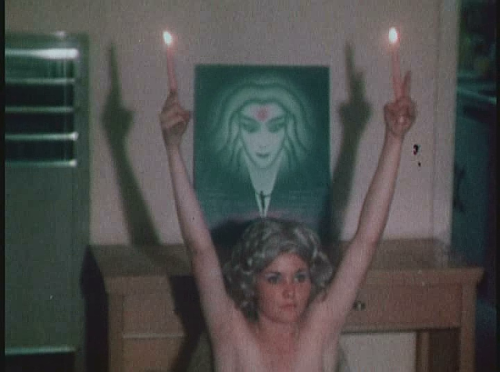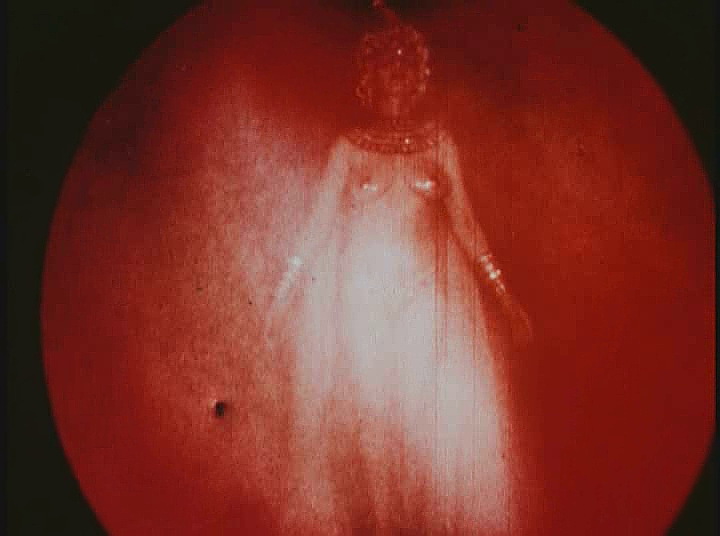| From http://hortfrancis.com/wp-content/uploads/2015/05/ NRFF-Waltz-With-Bashir-poster.png |
Director: Ari Folman
Screenplay: Ari Folman
Cast: Ari Folman as Himself; Ori
Sivan as Himself; Ronny Dayag as Himself; Shmuel Frenkel as Himself; Prof. Zahava
Solomon as Herself; Ron Ben-Yishai as Himself; Dror Harazi as Himself; Mickey
Leon as Boaz Rein-Buskila; Yehezkel Lazarov as Carmi Cna'an
 Synopsis: Filmmaker Ari
Folman is encouraged, after a discussion with a friend about a dream based
on his military experience, to investigate his own time serving in the Israeli
military during the 1982 Lebanon War, realising that he cannot remember a
single memory from the period barring what he believes to be a dream. Waltz with Bashir, an animated documentation
of his investigation - interviewing fellow soldiers from the war, psychologist
Prof. Zahava Solomon and TV reporter Ron Ben-Yishai, whilst weaving in
recreations of both events and dreams experiences - is the result of this
search.
Synopsis: Filmmaker Ari
Folman is encouraged, after a discussion with a friend about a dream based
on his military experience, to investigate his own time serving in the Israeli
military during the 1982 Lebanon War, realising that he cannot remember a
single memory from the period barring what he believes to be a dream. Waltz with Bashir, an animated documentation
of his investigation - interviewing fellow soldiers from the war, psychologist
Prof. Zahava Solomon and TV reporter Ron Ben-Yishai, whilst weaving in
recreations of both events and dreams experiences - is the result of this
search.
With Waltz with Bashir, Ari Folman
documented his own suppressed trauma, only able to remember a fantastical dream
of his time serving in the military only to realise he witnessed the events
surrounding a violent massacre, the Sabra and Shatila massacre of 1982. To
document this, he created an animated work which intertwined documentary as he
talks with friends, fellow soldiers from the same war, one news reporter who
was in the war zone and a psychologist, alongside interpretations of both real
events that took place and, the fantasies during and after. Reaching its ten
year anniversary, Waltz with Bashir
was one of the first world films I ever took interest in, and it still stands
out because Folman used animation to
vividly depict all the emotions bottled up in himself and others. Whilst this
exact animation, which looks like rotoscope (the drawing over of real actor)
but is actually carefully put together by other means, struggled with his
follow-up The Congress (2013), it
felt right here. Appropriate for its personal connection to what Folman allowed to be included in this
film.
 |
| From https://wondersinthedark.files.wordpress.com/2010/09/picture-12.png |
The suppression of trauma, and how it grows to overcome this, is an inherently abstract notion which stands one foot between the conscious and subconscious, one which does not exist tangibly yet has incredible potential for physical harm as well as mental for a person who must deal with a traumatising event. It envelopes emotions, based on an experience that takes place, exists in the mind, and can lead to harm for someone. Folman depicts the genesis of his search from a friend recounting a dream of being tormented by a pack of dogs in the streets, the exact number of the guard dogs he had to kill during a night raid as a soldier. Folman's own reoccurring dream, naked in the ocean overlooking the Lebanese city of Beirut, is itself suppression of within the area of the infamous massacre of Palestinians and Lebanese Shiite civilians. One documented in the final chapters as a retaliation by the Lebanese Christian Phalange for the assassination of Lebanese leader Bashir Gemayel, Folman one of the unwitting Israeli soldiers around the refugee camp where their allies committed the atrocity within. How the film builds to this discover is of the greatest weight, documenting the war and revealing how black and white morality was a non-entity when, in the position of Folman as a young man alongside other Israeli soldiers, they found themselves in a conflict that made little sense day by day when within the Lebanese conflict.
This becomes more pertinent as an
Israeli film. Israel is a country with a very complex military and political
history, especially with the controversies with their relationship with
Palestine. One however which is oversimplified, one which from outsiders can
become pure misguided anti-Semitism and does not reflect that Israelis' own
views on their country's history being ambivalent and with regret (such as
Israeli documentarian Avi Mograbi's Avenge but one of my two eyes (2005),
which directly documents the moral issues of the Occupied Territories between
Israeli-Palestinian areas). Waltz with
Bashir is not the only film by an Israeli filmmaker who served during the
1982 Lebanese war to look back with critical reflection - Samuel Maoz's Lebanon (2009)
depicts events entirely from within a tank - and Folman's film significantly denounces no one on any side barring
the Lebanese Christian Phalange for the genocide.
 |
| From https://cps-static.rovicorp.com/2/Open/Sony%20Pictures/Waltz%20With%20Bashir/ _derived_jpg_q90_600x800_m0/WaltzWithBashir-Still7.jpg?partner=allmovie_soap |
His and other Israeli soldiers or the Lebanese, through the recollections, are seen within usually chaotic. Israeli soldiers forced into horribly ambiguous scenarios between being killed even if that includes facing a child with a rocket launcher, the kind of scenarios which would traumatise any sane person, and is one of the recollections specifically brought up. Aware of civilian casualties, aware that the nobility of war is merely a presumption rarely with the clearly defined villains and heroes. Even if there were heroes or people within the war who merely wanted to serve their country, as Folman and the other formers soldiers he interviews were, they still suffered through sights which few would ever want to relive. Even World War II, with clearly defined villains in the Nazis, was steeped in such horrifying mass death that would traumatise many. That reference is not incongruous to this review as, chillingly, one of the fellow Israelis Folman interviews speculates that his own guilt of having witnessed the Sabra and Shatila massacre had deeper subconscious agony, as a Jew, connecting back to when his own suffered the horror of one of the most inhumane atrocities to ever take place in human history with the Holocaust. There is something in particular, especially as its visualised in the animation, documenting how a patch of field was turned into an abattoir of inhumane mutilation which would have been painful for Folman to depict onscreen, especially as he goes as far as evoke the atrocities committed to Jews, a reference point which could be risky to include but feels like when Waltz with Bashir fully reveals its humanity against the horrors its being honest of.
This is more braver from him as,
before he deals directly with his realisation of the genocide that took place,
the first three quarters of the film has a very black sense of humour
permeating throughout it. It's a humane film, but humanity if spiked with the
blackest of humour. Willing to accept the general mindlessness of horror, that
the Israeli forces were as likely spending hours sunbathing on Lebanese beaches
mindlessly as much as they were being shot at. A punk song spits out how
civilian casualties are likely over animated bombs being unable to hit a single
enemy car but destroys the rest of the street. Commanders in their own forces
spending time fast forwarding through porn films just to get through the best
part. Folman briefly includes his
moment returning back to his homeland before returning to the front, a sad look
of disconnect where his break away from conflict is too short to heal him,
merely showing an alienation especially from his own girlfriend.
 |
| From https://i.ytimg.com/vi/1uYuAWDrwDk/maxresdefault.jpg |
Production wise, Waltz with Bashir is stupendous. The moments of pure fantasy themselves are beautiful and eerie. The Congress, Folman's ambitious adaptation of a Stanisław Lem sci-fi novel, felt like a failure which due to the mainly fantastical nature of its narrative showed severe limitations in the same animation style. Bashir in contrast is a realistic document which can use its style to depict the realism, adding to talking head footage a greater weight as a result especially as he weaves in the little details surrounding meeting some of the people he interviewed. It also allows the sight of a giant nude woman carrying a soldier off a boat to safety to become profound in contrast among the other phantastical moments. Animation's virtues, that it can show both real life in incredible detail but also allows reality to be bend to whatever the animators can pull off with their skill, is to be found here. Particularly with a film this personal, it is accomplished perfectly.
The decision to end on real
footage of the genocide's aftermath was seen as unnecessary for some film
critics back when first being reviewed - Mark
Kermode at least criticised the choice - but for me now it's necessary. The
suddenly awakening realisation for Folman,
when he realises the truth of his suppressed memories, is shown to us in the
sudden shock of reality. Away from animation, away from the subconscious, the
sudden awfulness of death as the footage does include sight of the bodies of
real human beings who did not deserve to die. The clarity is awful, agonising
for only a few minutes of a film that is entirely animation elsewhere. But Folman rightly decided to visualise the
sudden awakening to what he had to accept and force himself to contemplate
decades later as a filmmaker looking back on the incident, forcing us to see
real news footage with the same bleak clarity.
 |
| From https://www.mercurynews.com/wp-content/ uploads/2016/08/20090123__waltz1.jpg?w=620 |
Abstract Spectrum: Dreamlike/Expressionist/Introspective
Abstract Rating (High/Medium/Low/None): None
Personal Opinion:
A film which has always stayed
with me since ten years or so ago. Even if Ari
Folman never made another film, let alone one as good as his debut, he
deserves canonisation because of what Waltz
with Bashir achieved. Profound, moving, capable of humour whilst never
losing its seriousness or the severity of the material, and something which
provokes a deeply emotional response to its story. The most personal of
projects.

















